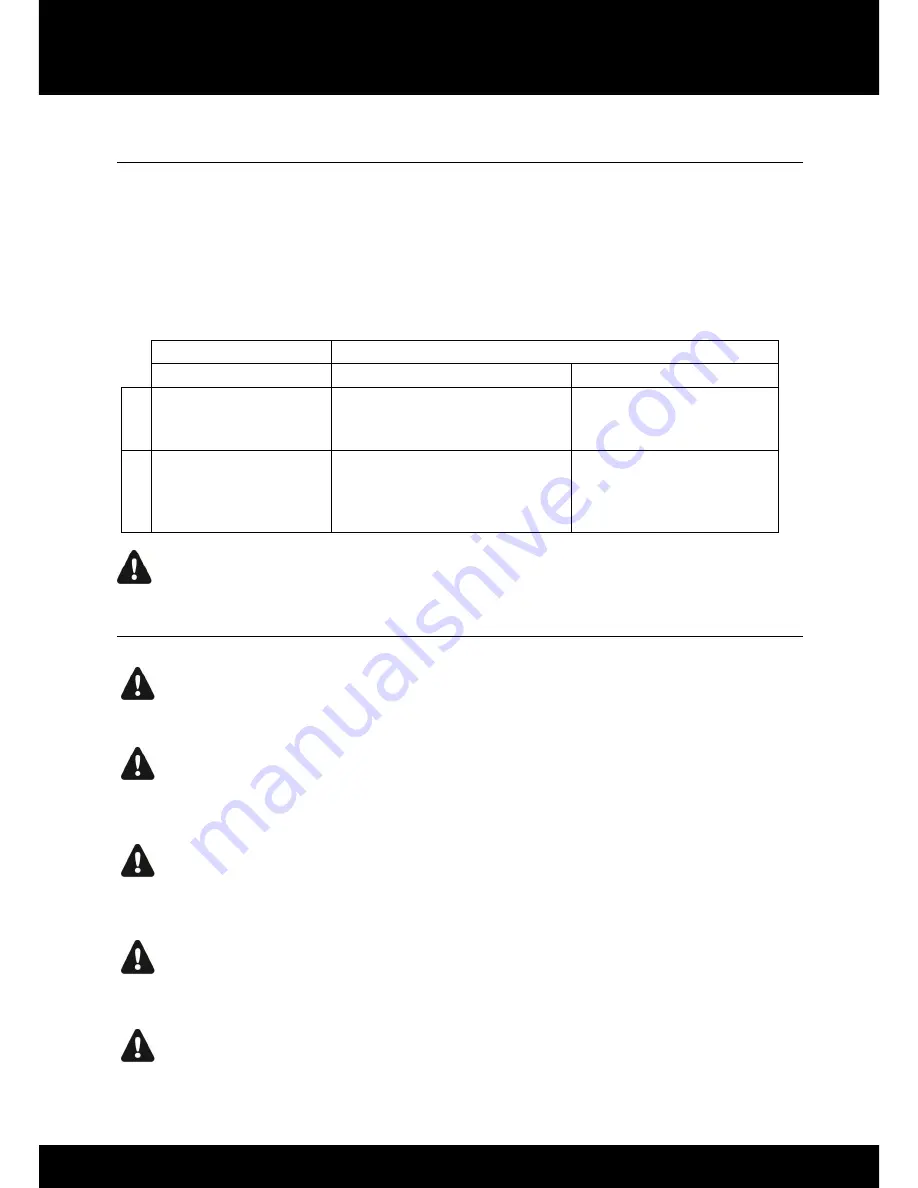
KIVA SYSTEM
KIVA SB15
m
rigging manual
VERSION 1.1
KIVA-SB15
m
_RM_EN_1.1
w w w . l - a c o u s t i c s . c o m
6
2
MECHANICAL SAFETY
2.1
Maximum configurations
The KIVA system rigging complies with BGV-C1 (2012), DIN 18800 and EN ISO 12100-1 (2004) when the following
arrays are deployed.
The safe configurations are always compliant with the standards listed before, regardless of the deployment parameters
(site angles, inter-enclosure angles, etc.).
The maximum configurations correspond to the mechanical limit of the rigging accessories, before deploying these
configurations always model the system in SOUNDVISION and check the
Mechanical Data
section for any
stress
warning
or
stability warning
.
For mixed arrays always refer to your SOUNDVISION model.
Stacking
Flying
With KIBU-SB
With KIBU-SB and shackle WLL 1 t With KIBU-SB and CLAMP250
Safe
2 KIVA
or
8 SB15m
12 KIVA
or
8 SB15m
12 KIVA
or
6 SB15m
Max
imu
m
20 KIVA
or
8 SB15m
20 KIVA
or
8 SB15m
18 KIVA
or
6 SB15m
Mechanical safety of the rigging system
Before any installation, always model the system in SOUNDVISION and check the
Mechanical Data
section for any
stress warning
or
stability warning
.
2.2
Assessing mechanical safety
In order to assess the actual safety of any array configuration before implementation, refer to the following warnings:
Rated working load limit (WLL) is not enough
The rated WLL is an indication of the element resistance to tensile stress. For complex mechanical systems
such as loudspeaker arrays, WLLs cannot be used per se to determine the maximum number of enclosures
within an array or to assess the safety of a specific array configuration.
Mechanical modeling with SOUNDVISION
The working load applied to each linking point, along with the corresponding safety factor, will depend on
numerous variables linked to the composition of the array (type and number of enclosures, splay angles) and
the implementation of the flying or stacking structure (number and location of flying points, site angle). This
cannot be determined without the complex mechanical modeling and calculation offered by SOUNDVISON.
Assessing the safety with SOUNDVISION
The overall safety factor of a specific mechanical configuration always corresponds to the lowest safety factor
among all the linking points. Always model the system configuration with the SOUNDVISION software and
check the Mechanical Data section to identify the weakest link and its corresponding working load. By
default, a stress warning will appear when the mechanical safety goes beyond the recommended safety level.
Safety of ground-stacked arrays in SOUNDVISION
For ground-stacked arrays, a distinct
stability warning
is implemented in SOUNDVISION. It indicates a tipping
hazard when the array is not secured to the ground, stage or platform. It is user responsibility to achieve full
anchorage and to ignore this warning.
Consideration must be given to unusual conditions
SOUNDVISION calculations are based upon usual environmental conditions. A higher safety factor is
recommended with factors such as extreme high or low temperatures, strong wind, prolonged exposition to
salt water, etc. Always consult a rigging specialist to adopt safety practices adapted to such a situation.






































